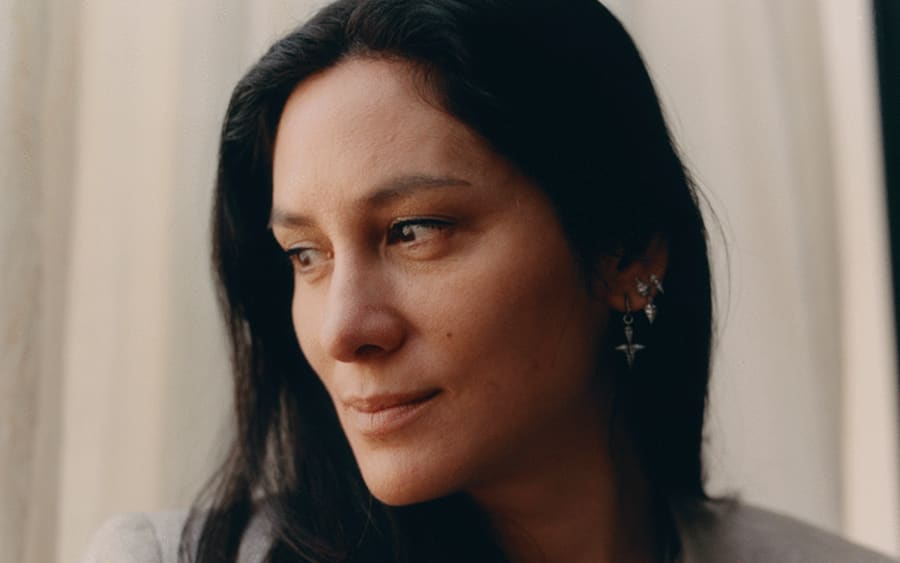‘Art, for me, is existential. It’s been my way of keeping life in balance ever since I started a career in finance over 20 years ago.
‘I grew up in Austria, but I spent much of my early adult life in East London where I was captivated by the art on the streets. One day, I walked into a small gallery in Covent Garden called TomTom. A street artist I admired had a solo show there, and the works were mostly unsold. I felt a strong need to live with his work, so I stretched my then modest salary to acquire a few pieces. That Christmas, the same artist organized a pop-up store called Santa’s Ghetto, which sold works for a few hundred pounds each. I invested most of my savings. The artist was Banksy.
‘This was the first of many occasions on which I have been deeply drawn to an artist, and have bought their work regardless of their fame or its value, or whether they were living or dead. I have never collected art as a status symbol. Many of the artists I acquired became famous later on, though that was never my focus. To this day, I have not sold a single work.
‘While I was building my career, eventually becoming Global Chief Operating Officer of Private Equity at Blackstone, my approach to collecting remained intuitive and personal. Michel Majerus became an obsession for me. I am a child of the 1990s and I like the same music, the same aesthetic, the same video games as he did. I have acquired every work by him I have been able to find over the past 10 years. My passion grew further when I met Thomas Bayrle, another artist whose work I had been collecting for years. When Bayrle talked about Majerus, and how they had been planning to share a studio, many things started to connect. Today, more than 20 years after his passing, I think Majerus is one of the most influential artists of his generation.
‘I would describe myself as an autodidact with respect to my choices in art – as someone eager to explore new things, especially when what I liked became too expensive. When, for instance, the important street artists became unaffordable, I immersed myself in the Pictures Generation (e.g. Robert Longo, Cindy Sherman, Richard Prince) and in photography from Japan and China (Hiroshi Sugimoto, Nobuyoshi Araki, Ren Hang). Being Austrian, I have a particular affinity for the country’s rich cultural history and artists like Birgit Jürgenssen, Maria Lassnig, Valie Export, Franz West, Gelitin, Christian Eisenberger, Angelika Loderer, Marina Faust, and many others.
‘Collecting, for me, is about supporting artists and the arts. Artists have been part of my circle of friends wherever I have lived, from London to New York, and currently Paris and Vienna. I am a founding partner of the Vienna-based organization Phileas, initiated by Jasper Sharp. It supports artists, curators, galleries, and institutions in Austria, with the goal of building their international presence. I’ve always enjoyed connecting the dots and supporting projects across genres and regions. For instance, in 2023, I was happy to support Gelitin’s performance at O’Flaherty’s in New York; the space is co-run by Jamian Juliano-Villani whose work I collect as well.
‘I’m interested in understanding the art ecosystem from different perspectives, including the institutional, and this is why I also became involved with Max Hollein’s Director’s Fund at the Metropolitan Museum of Art in New York. But primarily, I listen carefully to my artist friends. At times, this will lead to a purchase, just like when José Parlá suggested I take a look at Cuban-American painter Carmen Herrera’s first major show in London 12 years ago, and I ended up buying an important work from the 1970s.
‘In mid-2023, my family and I relocated from New York to Paris. Paris is of course beautiful and art historically very relevant, and it has now also become one of the most vibrant places for contemporary art. For creatives, it is still a more affordable place to live than London or New York, and there is an increasing number of international galleries to support them. The growing presence of influential foundations is a catalyzing force that is strengthening the entire scene. Art Basel Paris has played its part as well, and with the reopening of the Grand Palais, it’s seizing this pivotal moment.
‘Last year, I became a partner in Parallel Vienna, a hybrid of art fair, exhibition platform, and artist studios. It combines exhibitions by commercial galleries, off-spaces, and art associations, and individual presentations by selected artists, many of whom have no gallery representation. Parallel takes place in fascinating locations – often vacant buildings including hospitals and theaters. It’s an unconventional format that has been praised and well-supported by the art community for over a decade now. This is another way for me to spend more time within the art world, and to continue supporting artists’ careers, while also helping to bring much deserved attention to Vienna’s rich cultural scene.’
Florence Derieux is an art historian and curator.
Photographs by Cecy Young for Art Basel.
Published on September 16, 2024.


